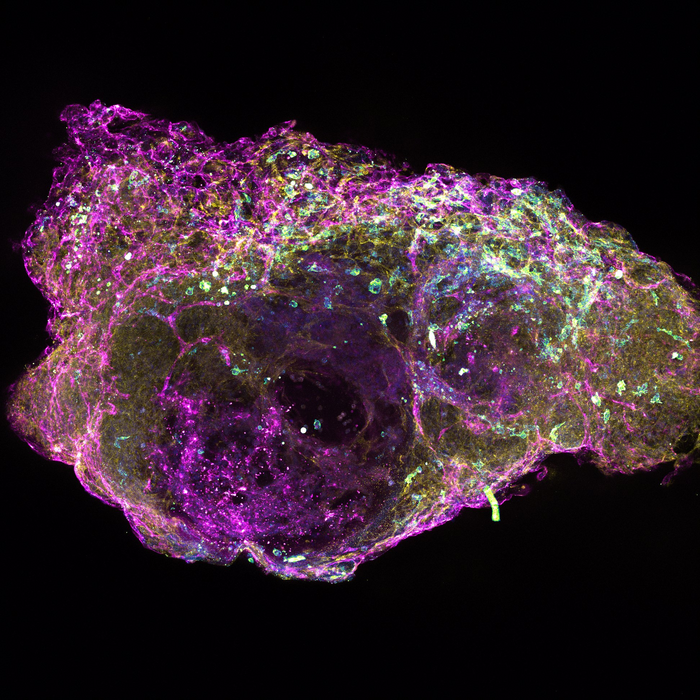A new study conducted in collaboration between the universities of MinnA new study reveals that estrogen deficiency alters the microRNA signalling in skeletal muscle

Credit: University of Jyväskylä.
Menopause is associated with several physiological changes, including loss of skeletal muscle mass. However, the mechanisms underlying muscle wasting are not clear. A new study conducted in collaboration between the universities of Minnesota (USA) and Jyväskylä (Finland) reveals that estrogen deficiency alters the microRNA signalling in skeletal muscle, which may activate signalling cascades leading to loss of muscle mass.
Menopause leads to an estrogen deficiency that is associated with decreases in skeletal muscle mass and strength. This is likely due to changes in both muscle function and the size of muscle cells commonly referred to as fibers.
“The mechanistic role of estrogen in the loss of muscle mass had not been established. In our study, we focused on signaling cascades in skeletal muscle that eventually lead to cell death,” explains Academy of Finland postdoctoral researcher Sira Karvinen from the Gerontology Research Center, Faculty of Sport and Health Sciences, University of Jyväskylä, Finland.
One possible signaling route leading to cell death involves microRNA molecules. MicroRNA molecules regulate gene expression by inhibiting targeted protein synthesis. To date, several microRNAs have been found to regulate key steps in cell death pathways and hence may regulate the number of muscle cells.
“In our previous studies we have established estrogen responsive microRNAs in both blood and muscle of menopausal women,” says the principal investigator, Academy research fellow Eija Laakkonen. “Now we investigated this observation in more detail by utilizing an animal model of low and high systemic estrogen levels provided by Professor Dawn Lowe’s group working at the University of Minnesota.”
The study revealed that estrogen deficiency downregulated several microRNAs linked to cell death pathways in muscle. This observation was associated with upregulation of cell death proteins.
“Thus, estrogen responsive micro-RNAs may share a mechanistic role in muscle wasting during menopause,” says Karvinen. “One preventative strategy recommended is for women to engage in resistance training especially at middle-age to aid in maintaining muscle mass and power.”
###
The study was carried out in collaboration between the universities of Minnesota (USA) and Jyväskylä (Finland) and was funded by National Institutes of Health (NIH, USA) and the Academy of Finland.
Media Contact
Sira Karvinen
[email protected]
Original Source
https:/
Related Journal Article
http://dx.





